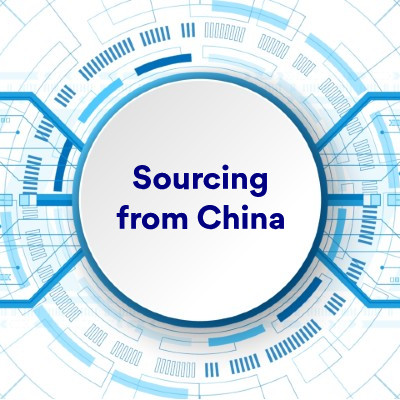


Chinese Multimedia
Multimedia worldwide is critical to messaging, marketing, information, and education. It is as important in China as it is in the rest of the world, and in many regions, including China, it is replacing national TV.
Contents are as wide-ranging in China as they are in the rest of the world. However, you must follow and respect the publication content rules, which are the same as in any country.
There are many platforms in China for multimedia content. For most of these platforms, you will need a local Chinese agent to review and publish overseas content on your behalf.
Major Chinese Multimedia platforms
iQIYI
- Often called the "Netflix of China". iQIYI combines a subscription-based model with ad-supported free content. It offers a wide range of content, including popular Chinese dramas, reality shows, anime, and movies.
- Original Content: iQIYI invests heavily in original series and films, including historical dramas and variety shows, to attract users.
- Technology: Known for using AI-driven recommendations, it also explores interactive and VR content to enhance the viewing experience.
Tencent Video
- Tencent Video is one of the largest platforms and integrates seamlessly with Tencent's other services (like QQ and WeChat), allowing easy content sharing.
- Exclusive Content and Partnerships: Tencent frequently collaborates with other companies to secure exclusive streaming rights for significant shows and top-rated IP-based series, such as famous novels or manga adaptations.
- Gaming Connection: Tencent is a gaming giant that capitalises on this link by streaming eSports events and game-related shows.
WeChat (微信, Weixin in Chinese)
- Mini programs are essentially apps within WeChat. This enables your Medio content to be loaded inside WeChat.
- Messaging: WeChat’s primary function is as a messaging app. It supports text, voice, video, and multimedia messaging, with group chats that can host hundreds of users.
- Moments: This feature functions like a social feed, where users share photos, links, and updates. Friends can like and comment on posts, similar to Facebook’s timeline but more tightly controlled for privacy.
Youku
- Owned by Alibaba, Youku initially began as a Chinese equivalent of YouTube but has since shifted focus to longer content and full-length series.
- Diverse Content Library: Youku offers Chinese dramas, movies, variety shows, and some Western content, focusing on family-friendly material.
- Integration with E-commerce: Since it’s part of the Alibaba ecosystem, Youku integrates with Taobao and Tmall, where viewers can buy products related to their watch content.
Bilibili
- Bilibili, originally anime-focused, has evolved into a full-fledged entertainment platform popular among Gen Z users.
- Interactive Community: Bilibili is known for its bullet comments, where users’ real-time text comments overlay the video, creating a unique viewing experience.
- Content Diversity: It offers gaming streams, anime, documentaries, and user-generated content. It also has a strong community around subcultures and niche interests, such as cosplaying and music production.
Kuaishou (Kwai)
- Kuaishou, known for short-form videos, has a loyal audience among users outside major cities. It emphasises relatable, user-generated content and is widely used in rural areas.
- Livestreaming and Social Commerce: Kuaishou is a leader in live-streaming e-commerce, where influencers and users can sell products directly through the app.
Douyin (TikTok)
- Known globally, Douyin focuses on ultra-short, vertical video content. It’s famous for lip-sync videos, dancing, and short, creative skits.
- Content Ecosystem: Douyin’s algorithm is finely tuned to recommend content based on user preferences, making it highly addictive. It lets users shop directly via video links, supporting brands and influencers.
- TikTok platforms: There are currently three TikTok platforms: China, the UK, and the USA. The content between these platforms is not shared. Some of the contents between these platforms are shared by copying contents manually.
Overseas multimedia
Overseas media platforms are not available in China.
There is an increasing amount of Chinese media published on overseas multimedia platforms.
Many Chinese people living outside of China: students, business visitors, holiday visitors, Chinese people sitting down, etc. Chinese people overseas often have access to Chinese multimedia platforms and republish videos, images, etc. onto Chinese social media.
While it is against Chinese regulations, Chinese people use VPNs to access overseas data and republish multimedia content in China.
Overseas website media content
Do not load media content, such as videos or pictures, from social media on your business website. These will be blocked in China. Instead, load your media content from your website server, and your business multimedia will be available in China.
Multimedia subtitles
Chinese people are used to watching video content in English with Chinese or English subtitles.
The software has been available for over five years, enabling automatic subtitle creation, e.g., YouTube.
While these subtitle-creation processes give good accuracy, the subtitles will need reviewing and correcting. Video subtitles can be found in the SRT file.
Multimedia multi-language subtitles
We recommend these steps for automatically translating your subtitles into multiple languages and making your videos available in local regions worldwide.
- Correct the subtitles as required in your local language or better in English (sorry, most computer translations use English as the base language).
- Use automatic translation software to translate into a second language and check this transition. At this stage, you do not have to translate into Chinese. The purpose of doing this is to check that the automatic translation software has understood your text.
- When you see errors in the translation, return to the original text and check for errors / change the wording so that the translation software has a better understanding. Repeat this a few times until any significant errors are removed.
- If you do not see significant errors removed, change the automatic translation software. Some new AI software gives better results than the historically used software (e.g., Google Translate).
- Now translate into a third language. You should see very few significant errors if any at all. Adjust the original text as before if required.
- You now should have an original text that can be automatically translated successfully into most languages without significant errors.
- Finally, translate your text into Chinese using the automatic translation software. There should now be no significant errors. Have a Chinese speaker check the translation to confirm the results.
Using English as an example, you may find that your text needs simplifying for automatic translation software to work successfully. This is sometimes called “Business English,” where you help your international colleagues understand your English by removing more complex language structures.
A few examples of overseas multimedia created for the Chinese market
Here are a few examples of media explicitly made for the Chinese market.
Having a video made for the Chinese market shows commitment. Using your existing media with subtitles is acceptable to the Chinese market at far lower costs.
This is an English promotional video with a Chinese heading and subtitles. The inclusion of a Chinese actress shopping is a nice touch.
This is a promotional video, for the Victoria and Albert Museum (V&M).
This example here uses amination. If the amination is kept to presentation format it can be the cheapest of the three video formats.
last modified: Version 2.3 - November 2024











